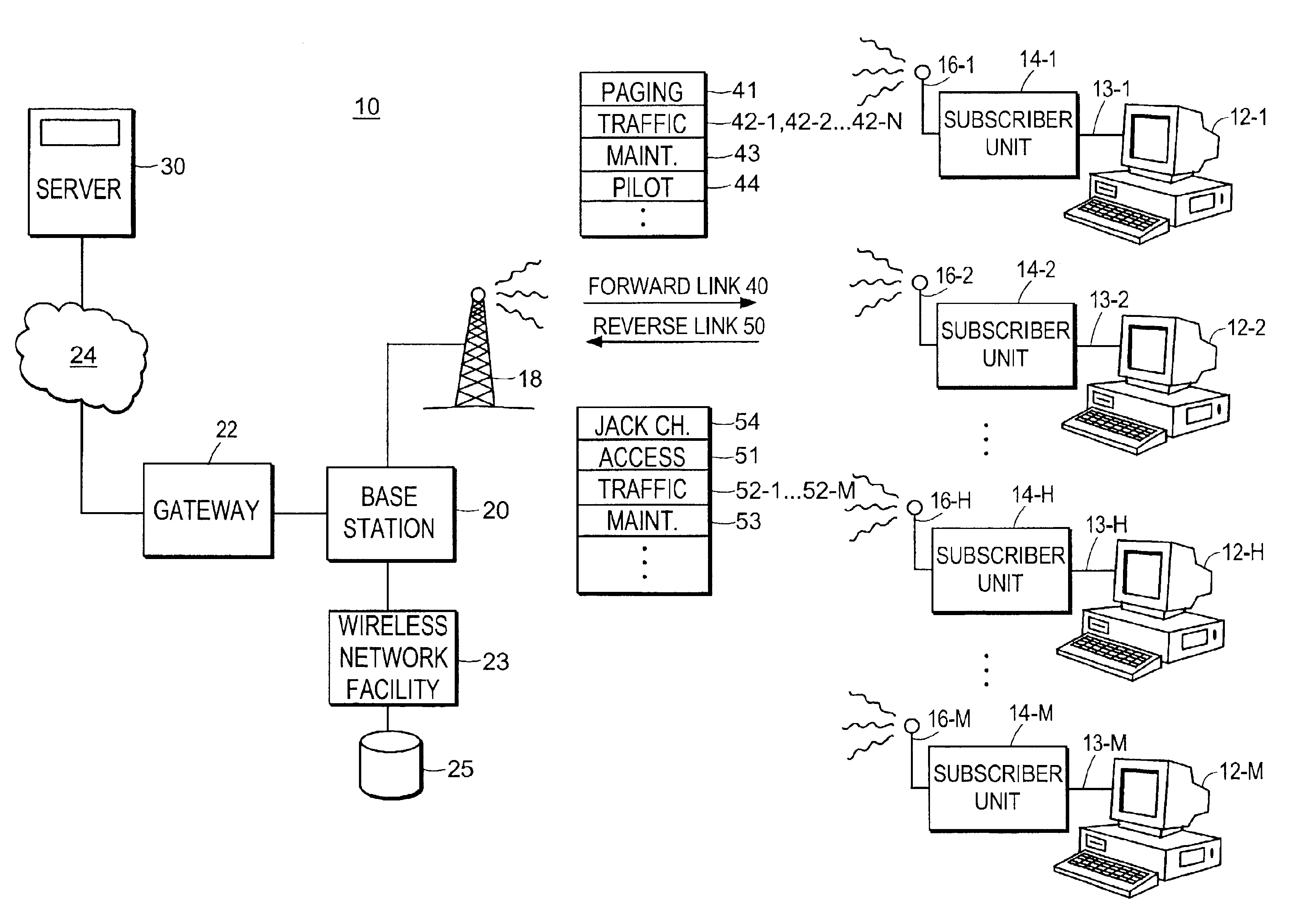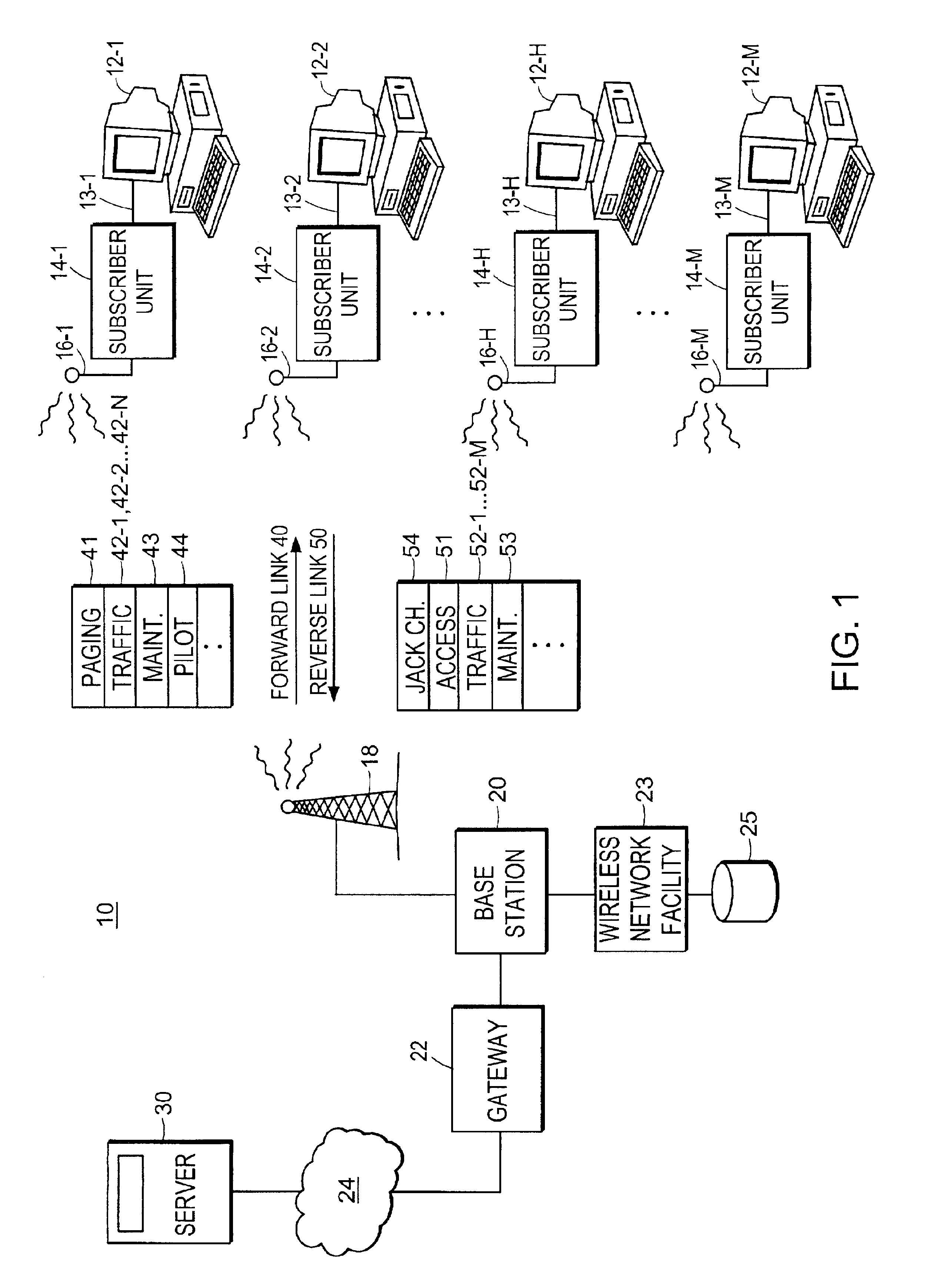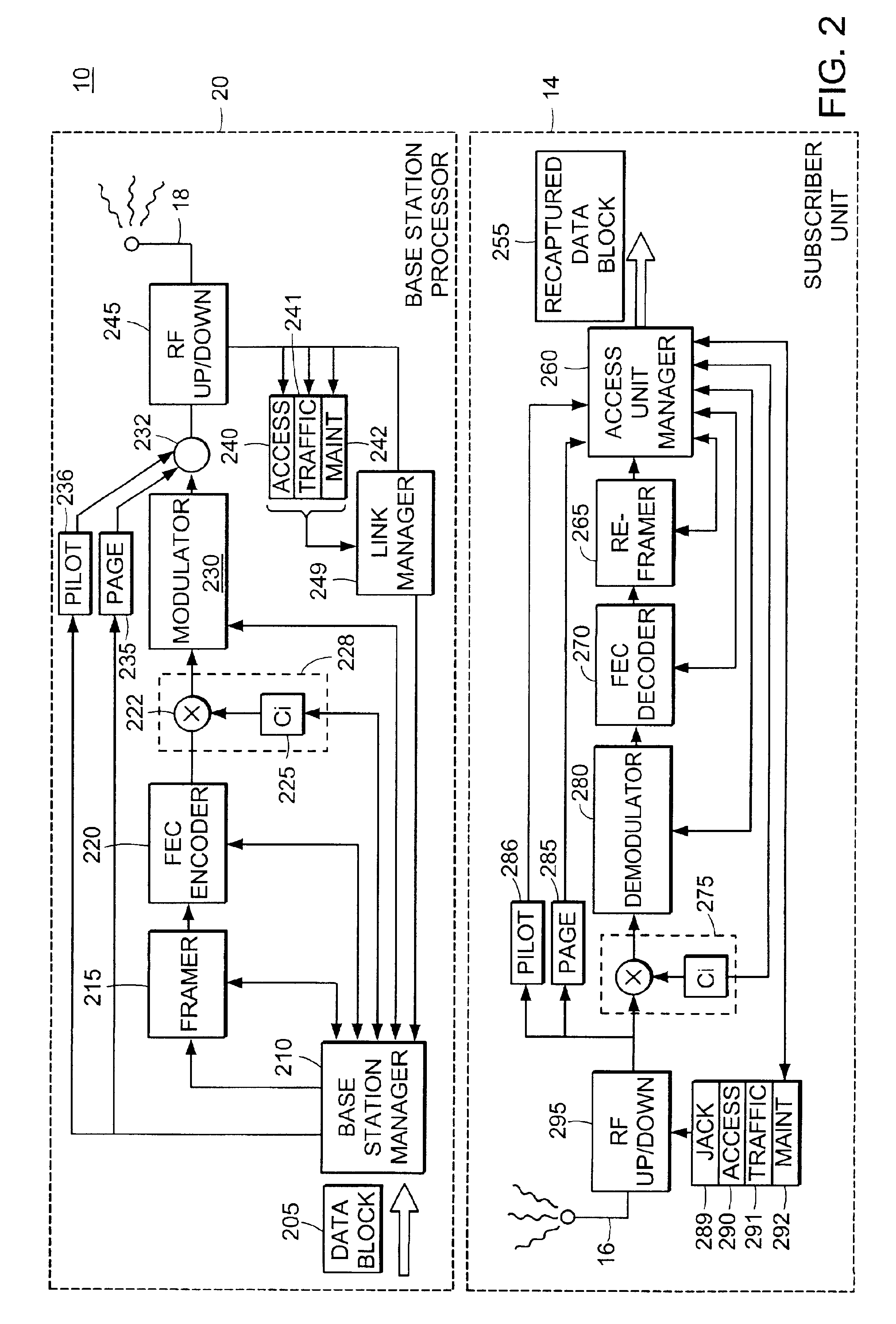Alternate channel for carrying selected message types
a channel and message technology, applied in the field of alternative channels for carrying selected message types, can solve the problems of cumbersome process of allocating and de-allocating traffic channels for the transmission of sporadically generated ack messages, channel cannot be utilized, and waste of wireless resources, so as to enhance the utilization of resources
- Summary
- Abstract
- Description
- Claims
- Application Information
AI Technical Summary
Benefits of technology
Problems solved by technology
Method used
Image
Examples
Embodiment Construction
[0043]A description of preferred embodiments of the invention follows.
[0044]FIG. 1 is a block diagram illustrating a communication system supporting the transmission of data information over multiple allocated wireless communication channels. As in many wireless communication systems, users compete for wireless bandwidth allocation. Hence, it is desirable that the wireless communication 10 is optimized for data throughput and, in certain applications, hi-speed bursts of data throughput.
[0045]Certain aspects of the present invention are based on the recognition that some messages transmitted over a wireless link are redundant to the extent that specific protocols are repeatedly used to communicate data information between a base station and each of multiple subscriber units. For example, one aspect of most network protocols involves transmitting acknowledgment messages in a return communication path to indicate the status of transmitted and received data between network devices such ...
PUM
 Login to View More
Login to View More Abstract
Description
Claims
Application Information
 Login to View More
Login to View More - R&D
- Intellectual Property
- Life Sciences
- Materials
- Tech Scout
- Unparalleled Data Quality
- Higher Quality Content
- 60% Fewer Hallucinations
Browse by: Latest US Patents, China's latest patents, Technical Efficacy Thesaurus, Application Domain, Technology Topic, Popular Technical Reports.
© 2025 PatSnap. All rights reserved.Legal|Privacy policy|Modern Slavery Act Transparency Statement|Sitemap|About US| Contact US: help@patsnap.com



